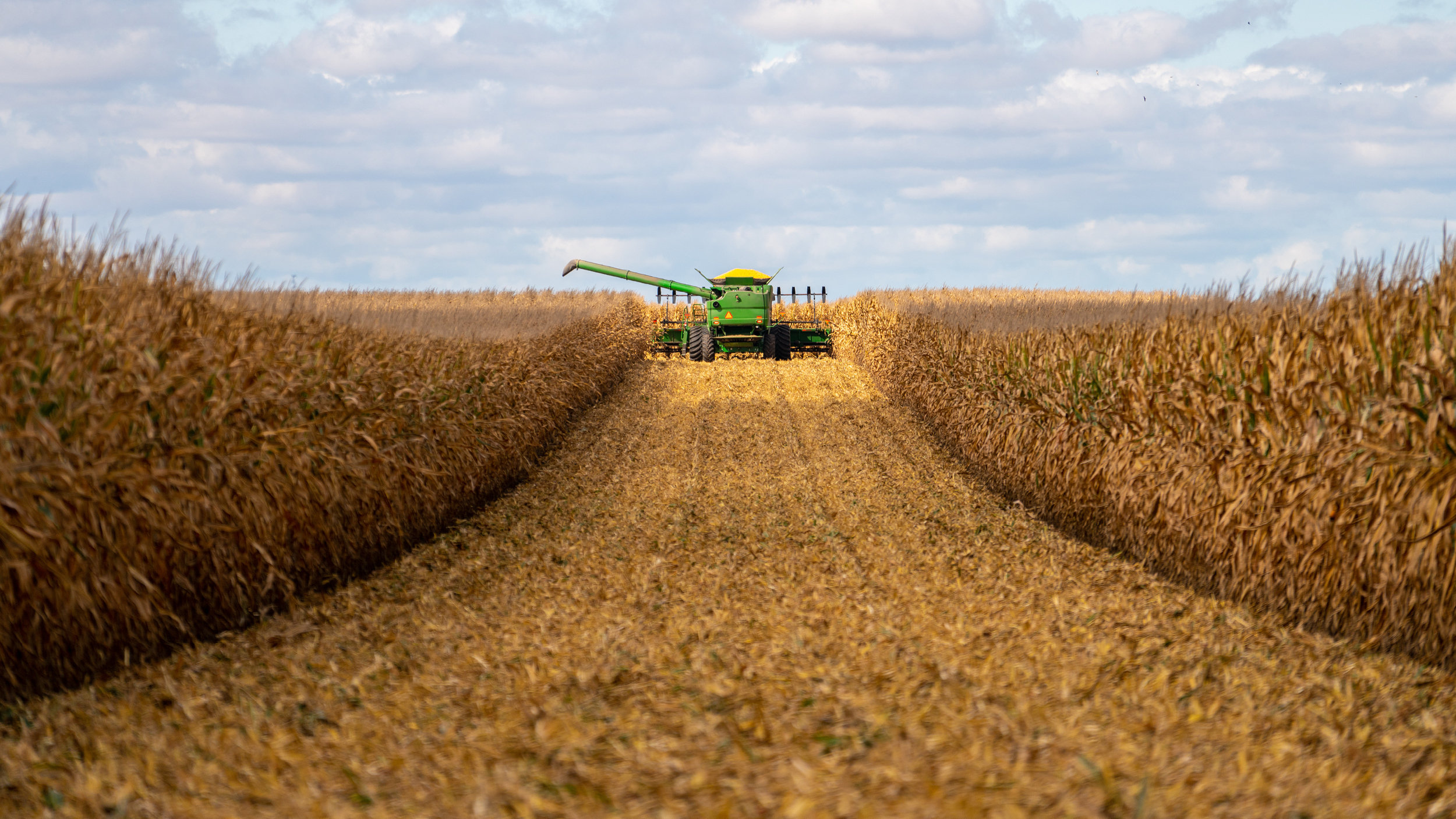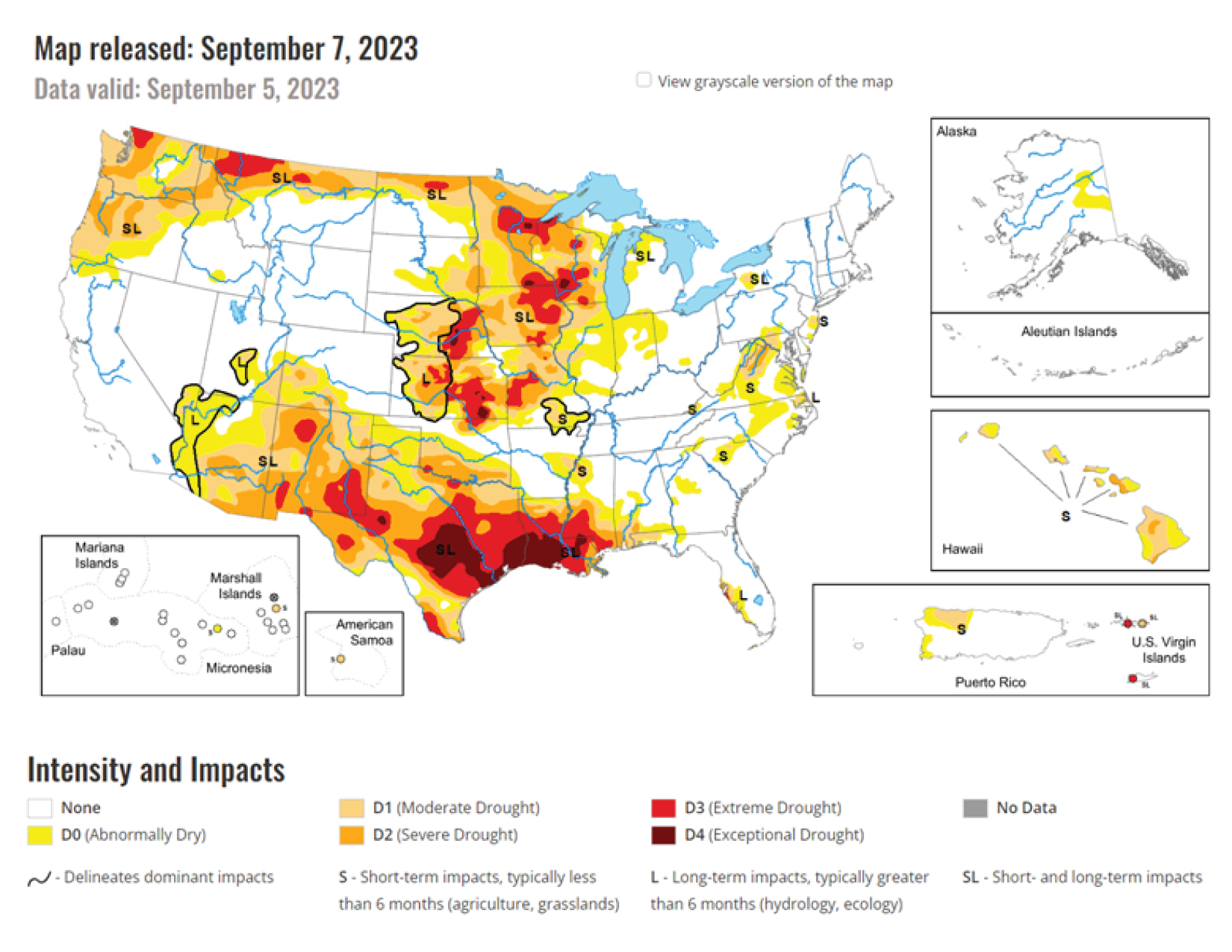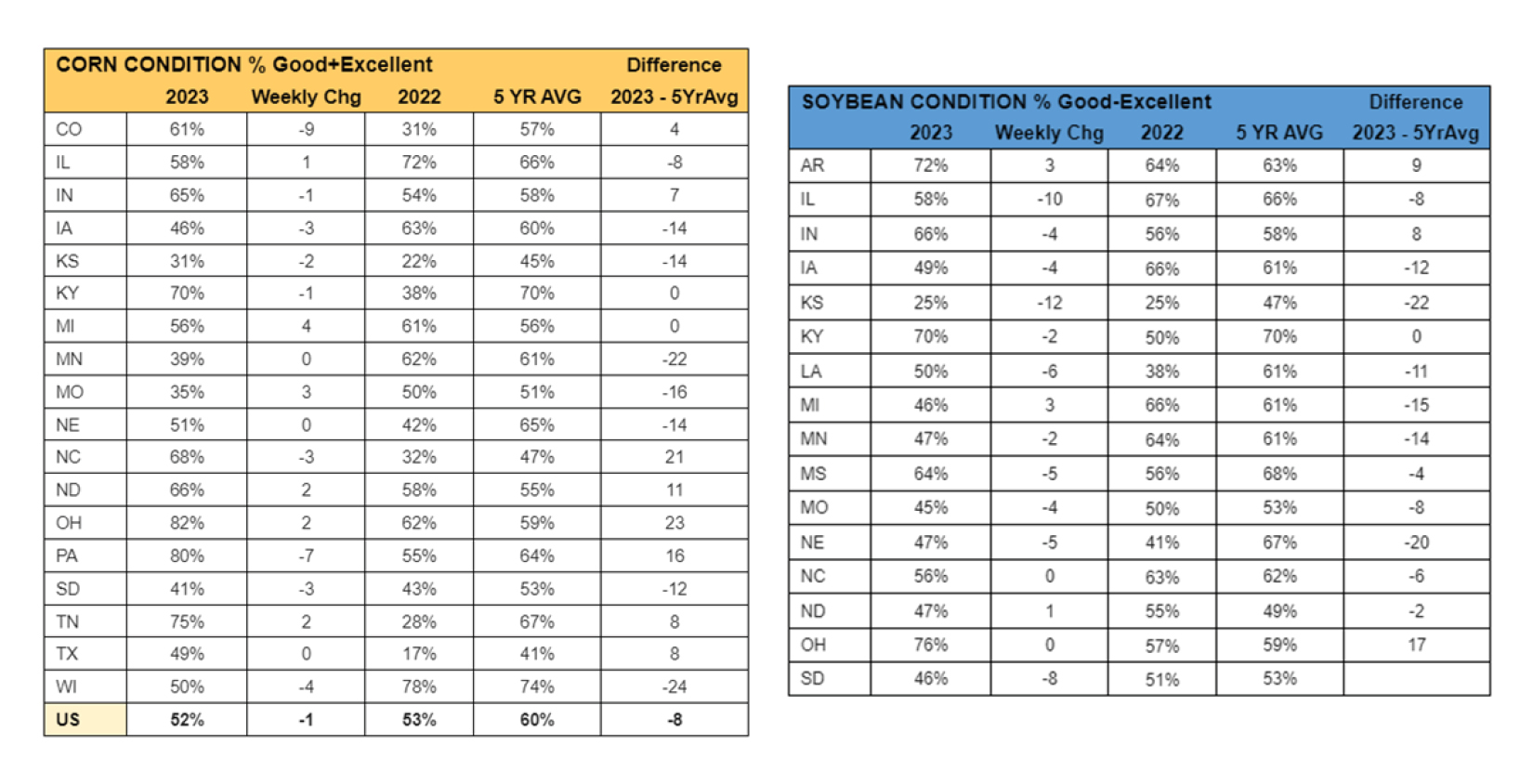
Harvest is quickly approaching, and many growers were in the fields by the end of September. My work takes me across the nation, and I’ve been to the Corn Belt, Western Plains, Pacific Northwest, and even Alaska this year. A question I regularly receive is, “What are your harvest expectations in the other parts of the country?” With Peoples Company's footprint stretching across the major agricultural regions, below is a harvest update based on my travels and collaboration with our land professionals throughout the country.
U.S. Drought Monitor

Iowa
The majority of my custom farms are located in southern and central Iowa. Planting conditions were favorable in late April and early May with excellent emergence from timely May rains. Drought conditions became prevalent in June with little rainfall throughout July. Early July brought favorable pollination conditions with below-average temps. In late July and early August, another three inches of rainfall was received over a ten-day period to finish out the corn crop. I am expecting above-average corn yields which is a testament to the drought-tolerant hybrids and advances in soil health.
Central Iowa’s soybean crop looked excellent throughout the growing season, and I was anticipating great yields in early August. Record August high temps were widespread with a week of nearly 100-degree days in the latter half of the month. This created the perfect storm for a poor-season conclusion. I expect soybean yields will be above average but eight to ten bushels per acre below what could have been if rains were received in mid to late August. The majority of Iowa is now in some form of drought, with extreme drought conditions throughout the eastern part of the state.
Eastern Corn Belt
I traveled through Illinois, Indiana, and Ohio in mid-June and Illinois again in late August. In June, most of this region was in a severe drought, and crop conditions were some of the worst I have seen. This region has bounced back in a big way receiving timely rains in July and August. The latest U.S. Drought Monitor shows virtually no current drought conditions in Indiana and Ohio and the latest USDA/NASS crop report shows the majority of corn in both states is rated “good to excellent.” Last month I saw the Illinois crop firsthand and it’s amazing to see the improvement in two short months. Drought conditions have decreased, and the high-quality soil will once again produce an above-average crop.
Nebraska
Crop reports from eastern Nebraska are inconsistent and changing quickly with the heat the last couple of weeks. The far southeast portion of the state has received the most rainfall and crop conditions are favorable. Irrigated farms in central Nebraska are looking good and on par with averages with most accounts showing yields should range from 200–225 bushels/acre. Pod counts for soybeans were around 50-60 pods per plant and most are coloring quickly, many farms should have 60+ bushel/acre soybeans.
The dryland areas in central Nebraska are not looking good. The rains ended last month and 90 to 100-degree days have been the norm. Most dryland soybeans in the hills are going to produce lower-than-average yields. Pastures are also burning up with minimal grass for grazing. Significant crop-producing acres of central and eastern Nebraska are considered “severe or extreme drought” conditions.
Michigan
Michigan’s corn crop ranges from fair to good condition. The Thumb region looks strong this season with county average yields projected to exceed 225 bushels/acre. Some farms farther north may break 250+ bushels/acre. Other portions of Michigan, especially in the southern third, may not fare as well due to several strong storms in late July and late August. Soybeans range between fair to average, largely due to the heavy rainfall. Agronomists are seeing higher-than-average amounts of SDS and white mold this year, which is projected to drop yields. Michigan had a state average of 47 bushels/acre in 2022. Yields should be slightly lower this year with most of the reduction coming in the southeastern part of the state.
California
California produces over 400 different crops, including half of U.S.-grown fruits and vegetables. With its diverse climate, the region's crops are harvested year-round. After record-breaking winter/spring rainfall and snowpack earlier in 2023, water has been plentiful in most of California. While rain is usually welcome, timing is everything, and the August arrival of Hurricane Hilary brought rain through much of the state during harvest.
The 2023 U.S. pistachio crop has been forecast at about 1.3 billion pounds. The California harvest is just beginning, and if the first shakes are a good indication, nut quality, and sizing are expected to be good as well. The 2023 California almond crop was forecasted to be 2.6 billion pounds, sparking continued concerns about oversupply and continued depressed pricing. Quality has now become the primary concern as initial reports from growers suggest that some of this year's crop could be impacted by staining, pest damage, and other issues. The silver lining is that a decline in quality nuts may finally give growers a hint of the pricing recovery that they have been waiting on for years. Recent rains have also been tough on the region's grape industry. While early table grape varietals were harvested before the storm, in areas of heavy precipitation, the mid varietals took a heavy hit. Initial reports suggest that as much as 35% of the region’s remaining table grape crop could be damaged.
Oregon and Washington
Drought conditions persisted throughout the summer which negatively impacted dryland crops. Nearly 100% of the winter wheat is harvested with below-average yields across the region. The alfalfa market hasn’t improved with less demand from livestock and dairy producers. Harvest in Oregon has slowed with rain and milder temps, but specialty crop harvest should increase over the next month. Wahington has many diverse crops, with apple and pear harvests currently underway. Yields are also expected to be stellar for wine grapes throughout the region ranging from the Columbia Valley AVA ranging east to the Walla Walla area.
Arkansas
Arkansas Rice yields have been impacted by pigweeds and other grasses this year. The yield range has been anywhere from 160 bushels/acre to 220+ bushels/acre with roughly 30% harvested. Some areas throughout Lonoke, Cross, Poinsett, and Craighead Counties have experienced hail damage. The heatwave that the Midsouth experienced for about 2 - 3 weeks this growing season allowed earlier maturing soybeans to be ready for harvest sooner than expected. Farmers are scrambling to get the crops out, as fields are all ready to harvest at the same time. As far as yields are concerned, a few fields are just getting started with no hard data yet. Cotton harvest has not begun, and cotton is beginning to turn. Corn harvest is in full swing, and yields range anywhere from 180-240+ bushels/acre. A significant amount of farms experienced wind damage as powerful storms pushed through when corn was coming out of the denting stage (R5) and on the break of the black layer (R6) of growth.
Tennessee
Soybeans are showing tremendous progress throughout TN and have high projected yields all around. Some areas could use a bit more rain and the potential for rain is shown in the extended forecast. Cotton harvest is a bit behind due to the delays in planting earlier in the year. Timely rains have knocked the crop progress back a bit as cotton does not like to have "wet feet." Corn harvested is just getting started with yields ranging from 150-200+ bushels/acre depending on dryland vs. irrigated.
Louisiana
Harvest is significantly underway with 75% of all crops out of the field and harvested. Yields are slightly down across the board on the later planted crops due to the sustained drought and excessively high temperatures throughout the latter part of the growing season. Irrigated corn yields are all over the map, but the earlier corn crop is yielding better with numbers coming in between 200-225 bushels/acre. Unirrigated corn is coming in between 140-160 bushels/acre. Soybean yields for early plants are coming in between 55-70 bushels/acre, but later planted soybeans are closer to 50 bushels/acre due to the excessive heat during later growth stages. The cotton crop looks rough after weeks of 100+ temps but harvest hasn’t started yet, and yield estimates have been reduced. Rice yield has been fairly consistent and hovering around 205-225 bushels/acre on the earlier planted acres. Yields will be diminished on the later planted rice due to the heat.

If you are interested in learning more about crops throughout the country, please contact Peoples Company Land Management at LandManagement@PeoplesCompany.com.










